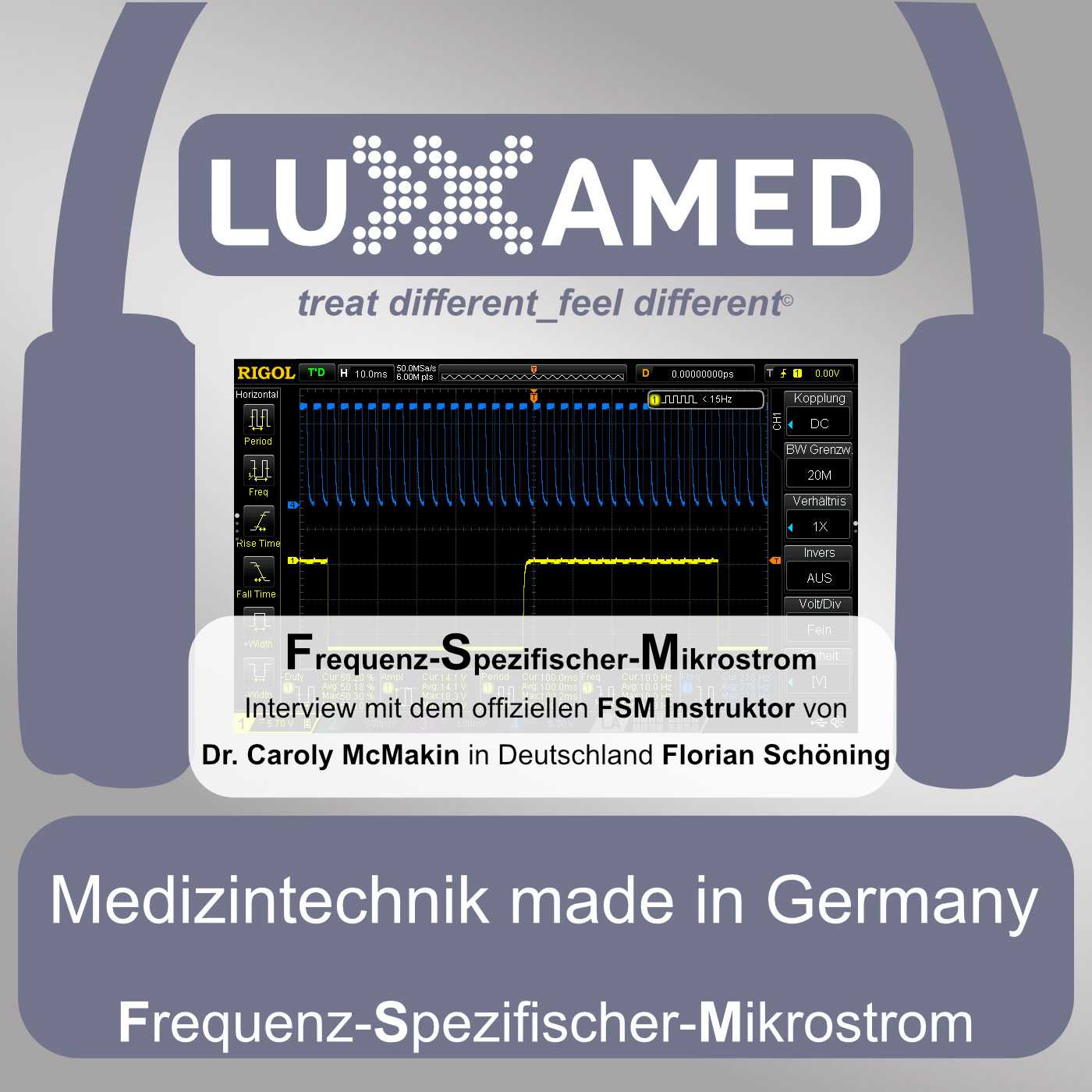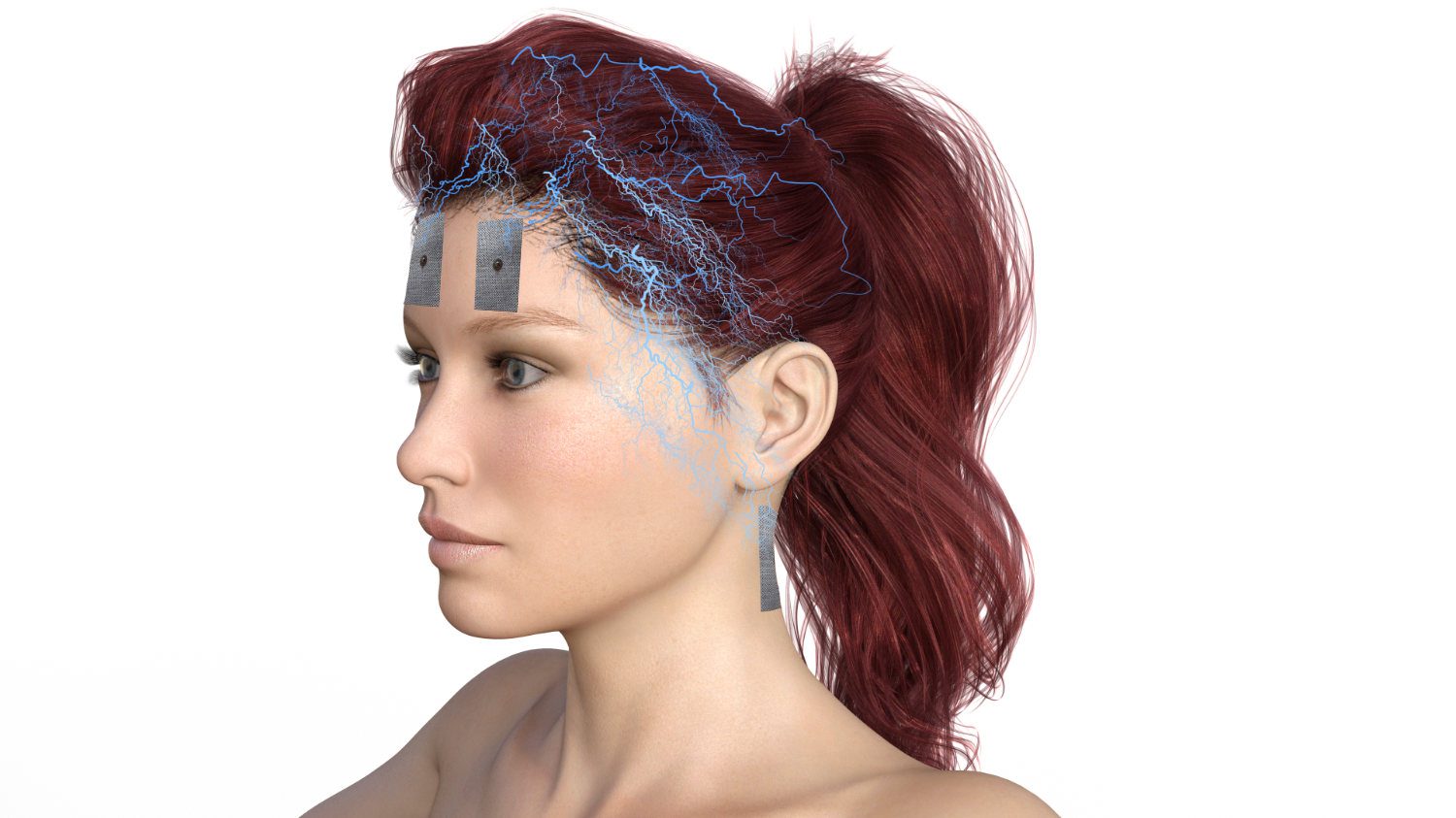Dieser Beitrag ist auch verfügbar auf:
![]() Deutsch
Deutsch ![]() Italiano
Italiano ![]() Español
Español
M. piriformis
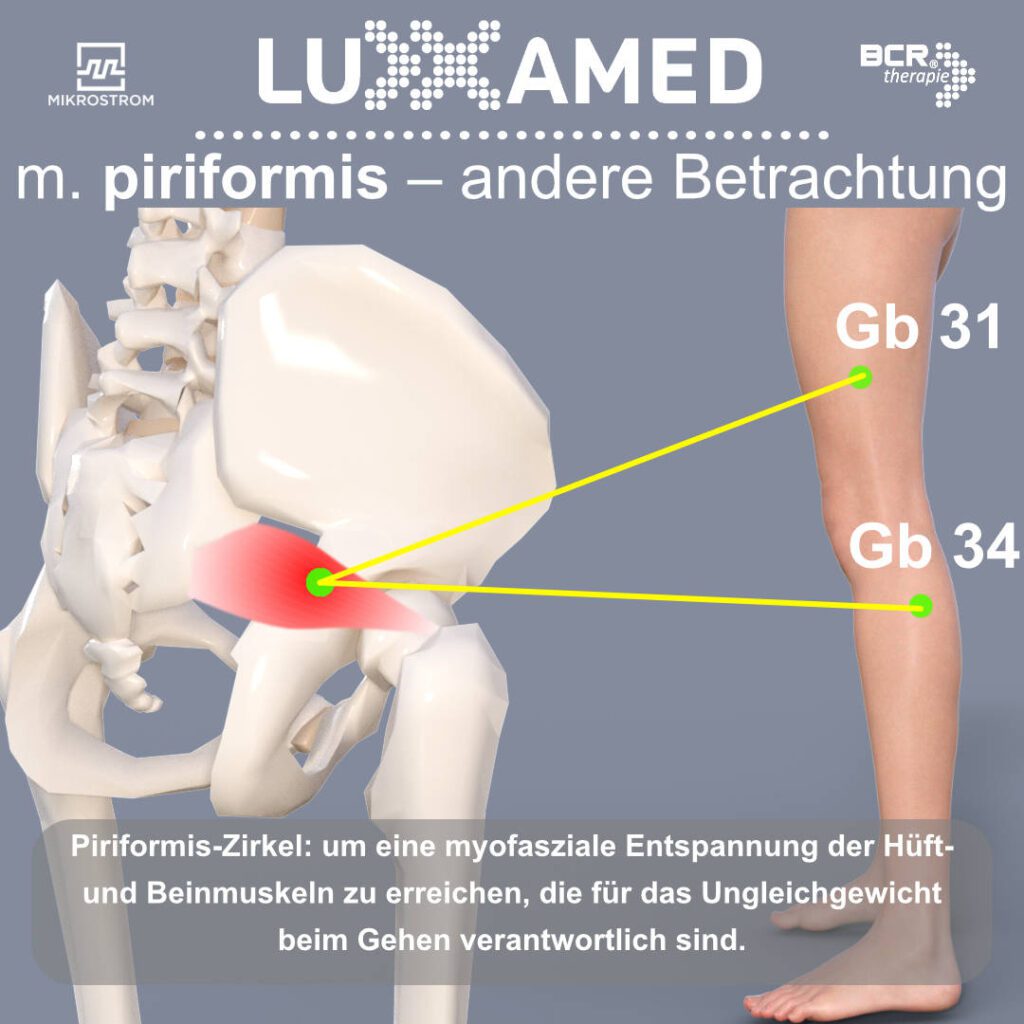
Compared to its local ‘colleagues’ (gluteal muscles), the piriformis muscle tends to weaken and therefore belongs to the reflex muscle category.
Tone regulation of the reflex muscles has been demonstrated in the past with microcurrent ? and the rod electrodes ? (these are unfortunately no longer authorised for electrical safety reasons). However, the same result can also be achieved with LED light therapy ???.
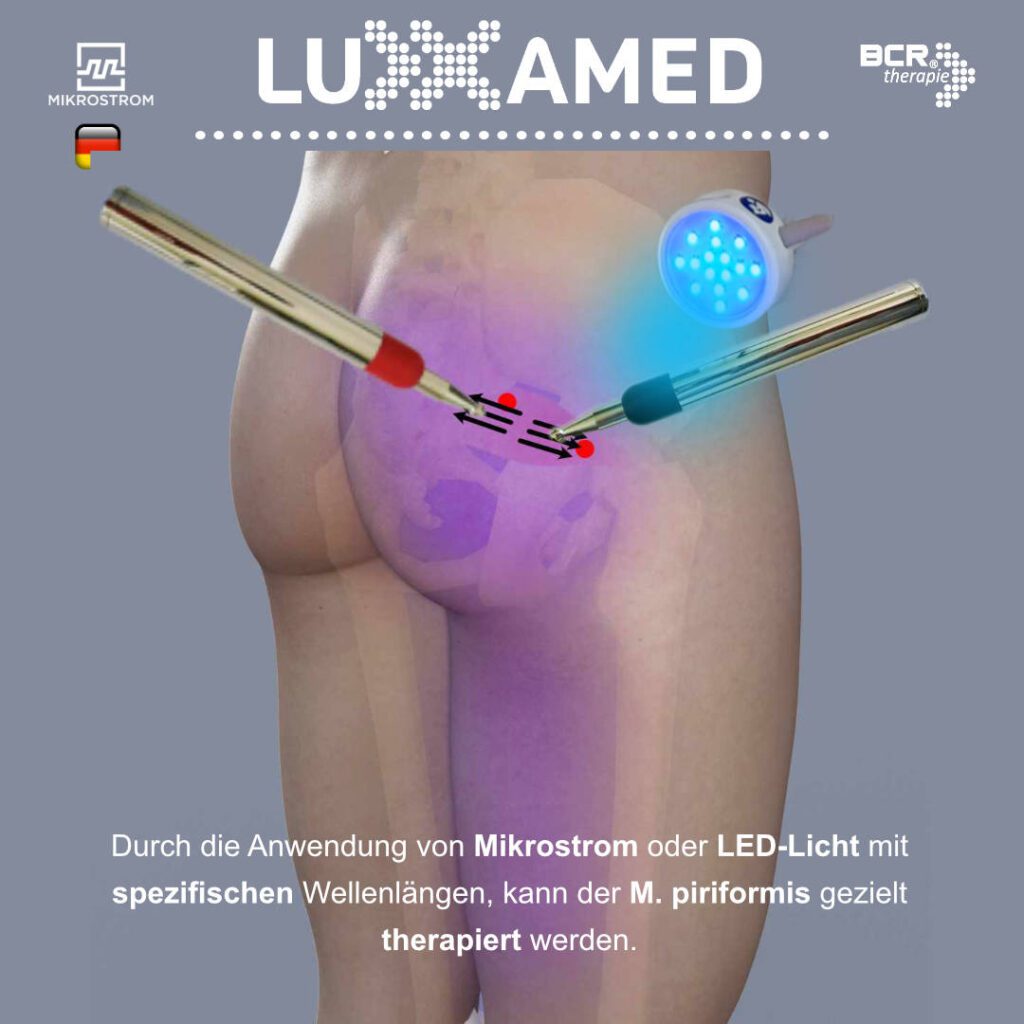
‼️ In our courses (also online as a video course) we train and explain the therapy of reflex muscles with microcurrent and LED light therapy. ‼️
Two circuits relieve the piriformis, the hip and the lateral thigh muscles. The first: start by palpating the transverse fibres at the upper angle of the piriformis muscle. Thick motor bands are often easy to feel where the piriformis and gluteus maximus and minimus muscles meet.
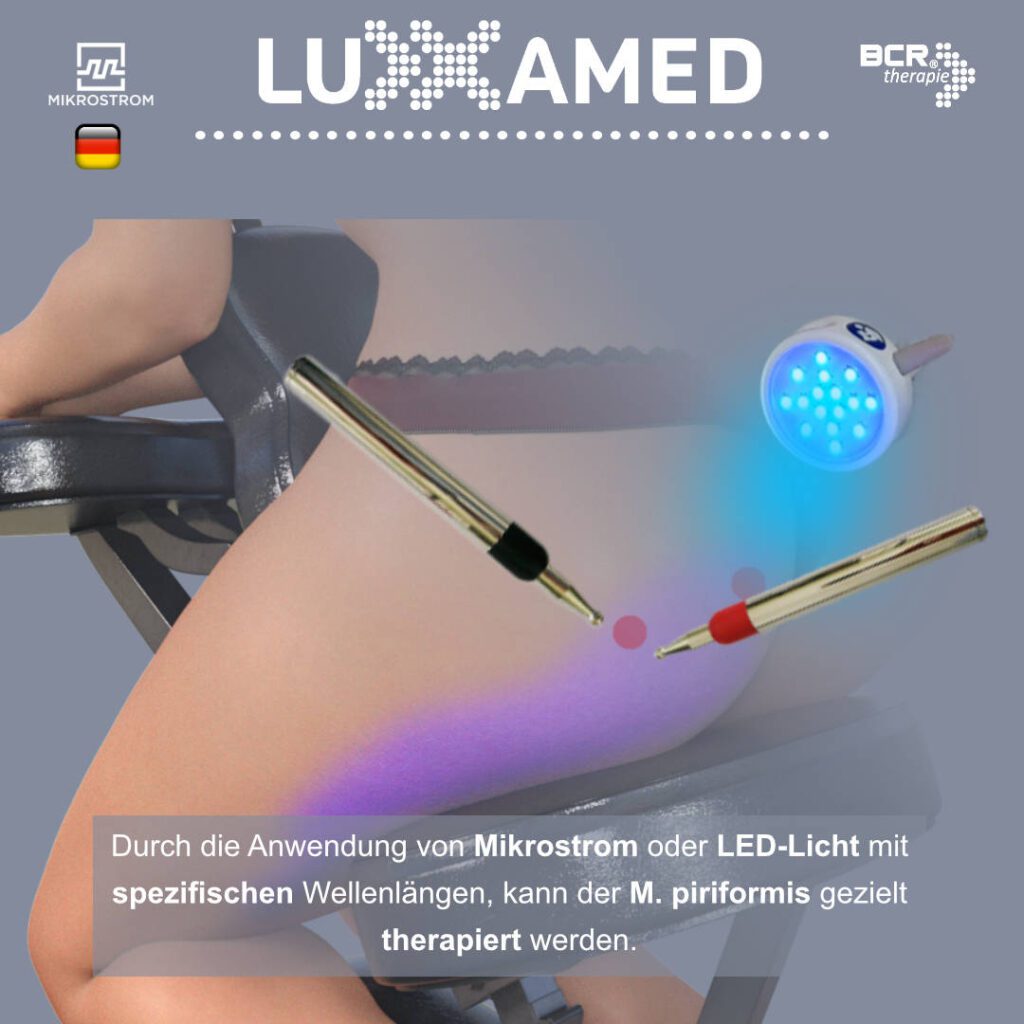
Apply LED light therapy or also microcurrent therapy to the most sensitive trigger point located within the motor ligaments; the other circuit should be applied to the trigger point of the iliotibial band (located at the end of the main rib with the hands on the side (Gb 31 in acupuncture).
Simultaneous stimulation of these two points often results in a strong myofascial response between the hip and the lateral thigh muscles, which can provide pain relief. (Hocking, 2002).
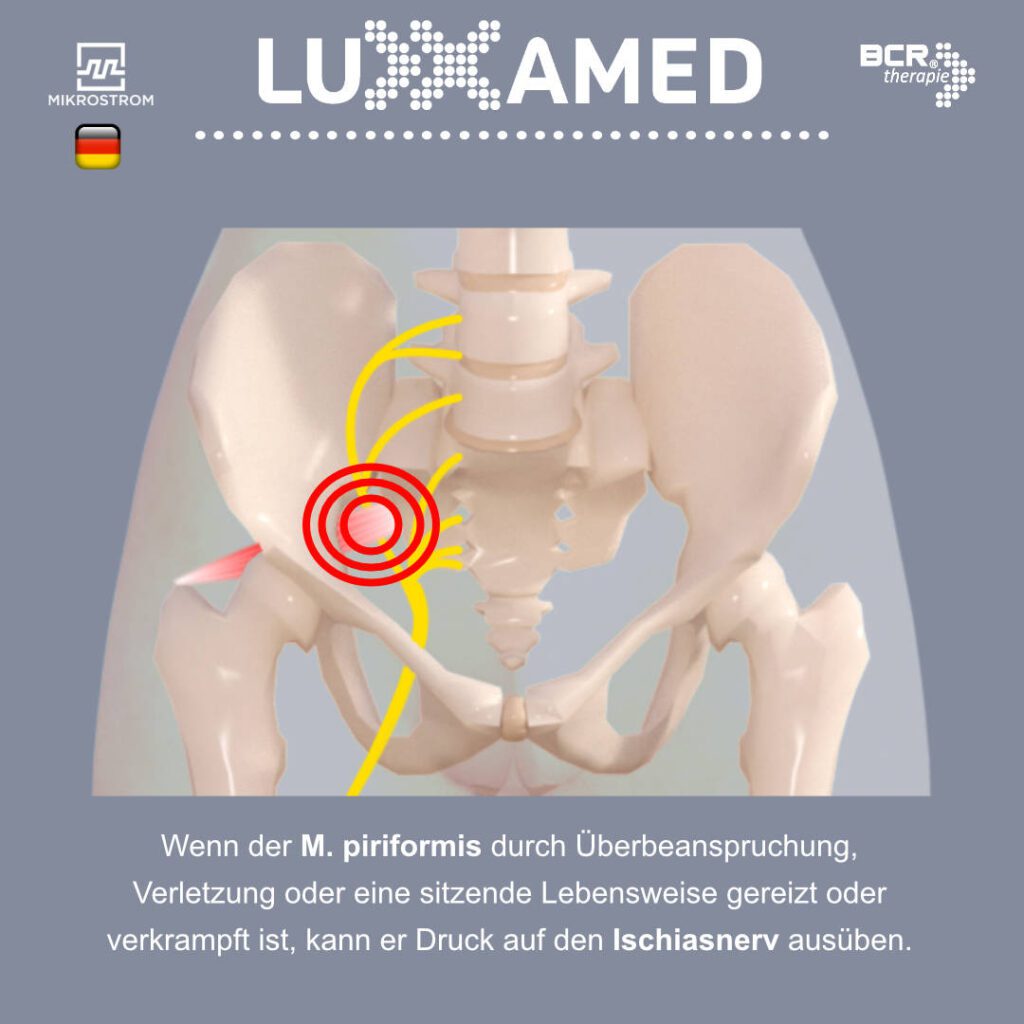
The sciatic nerve runs from the lower back through the buttocks and along the back of both legs. The piriformis muscle lies exactly in the path of the sciatic nerve and is responsible for the external rotation of the hip joint. When everything is in balance, the muscle and nerve work together harmoniously and enable movement and feeling in the legs.
Sometimes, however, problems can occur. If the piriformis muscle is irritated or cramped due to overexertion, injury or a sedentary lifestyle, it can press on the sciatic nerve. This condition is called piriformis syndrome and can lead to pain, numbness and tingling in the buttocks and along the sciatic nerve.
The symptoms of piriformis syndrome are often similar to those of sciatica caused by lower back problems such as herniated discs. Therefore, a correct diagnosis is important to determine the best method of treatment.
To relieve symptoms and treat piriformis syndrome, stretching and strengthening exercises for the piriformis and surrounding muscles can be helpful. In addition, physiotherapy such as manual therapy and specialised exercises can be used to relax the muscle and reduce pressure on the sciatic nerve.
Sources:



